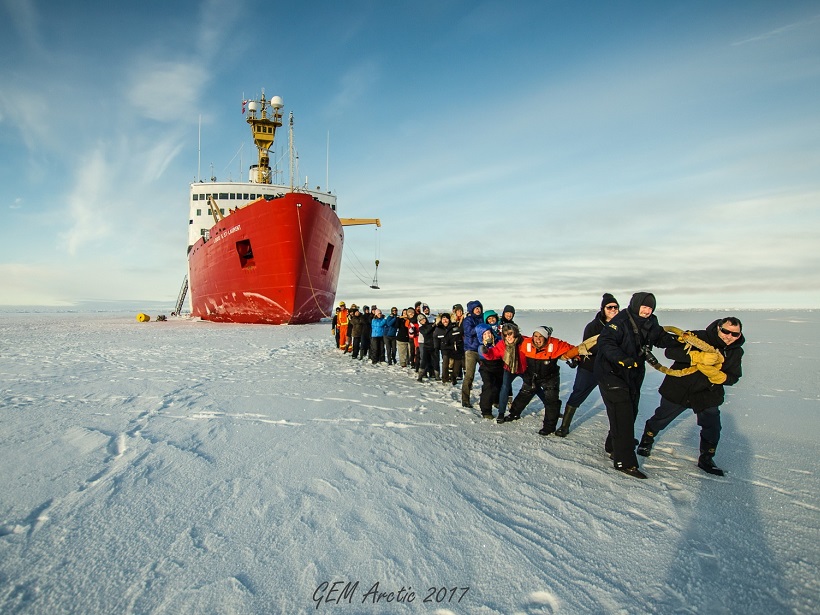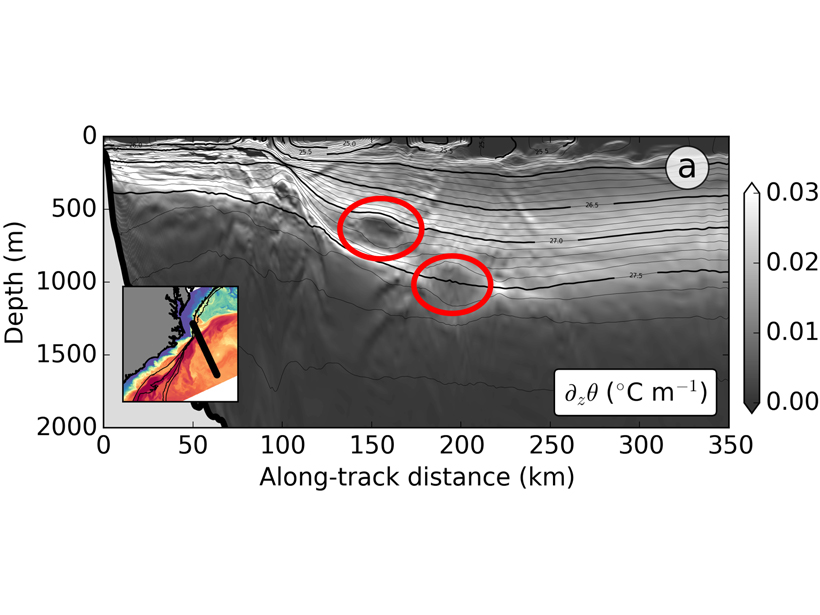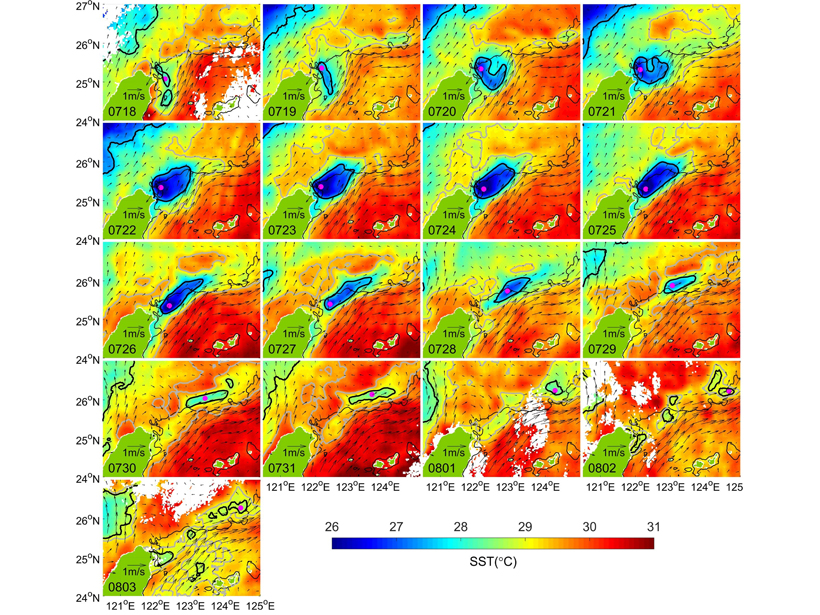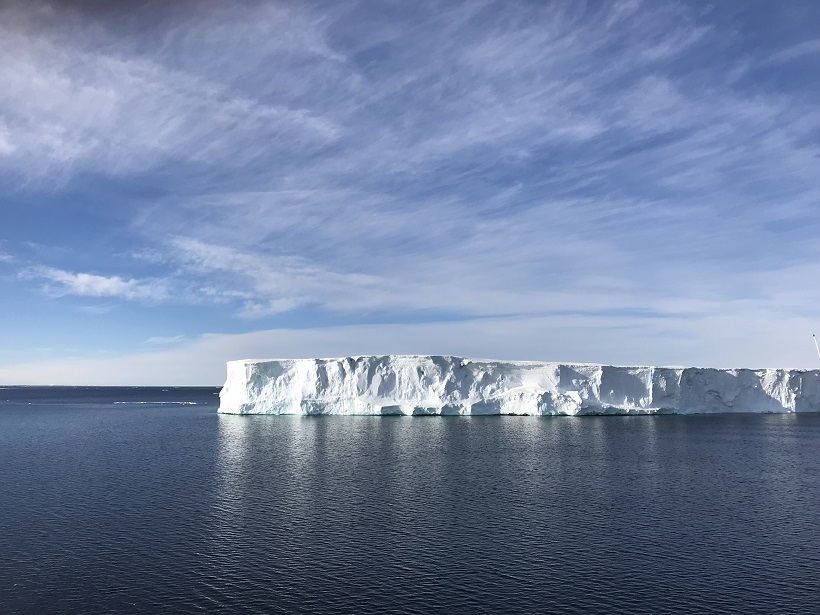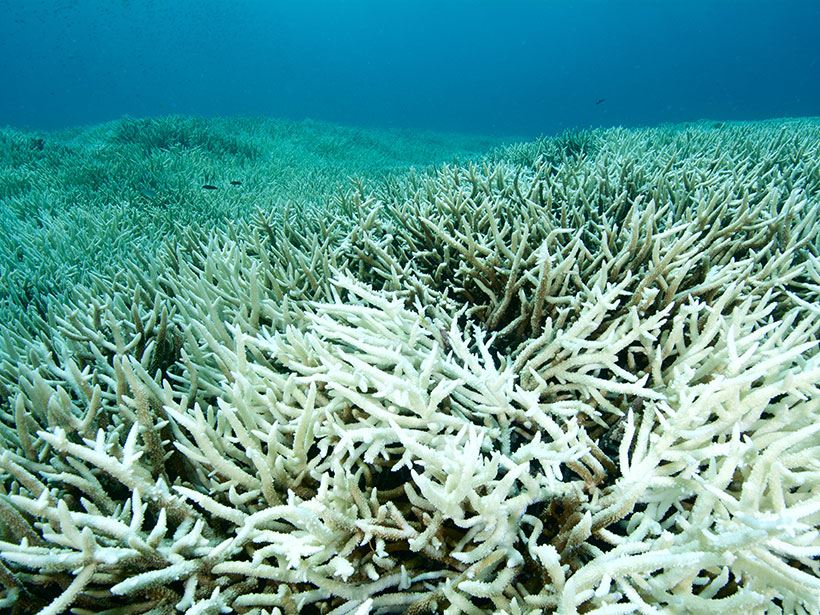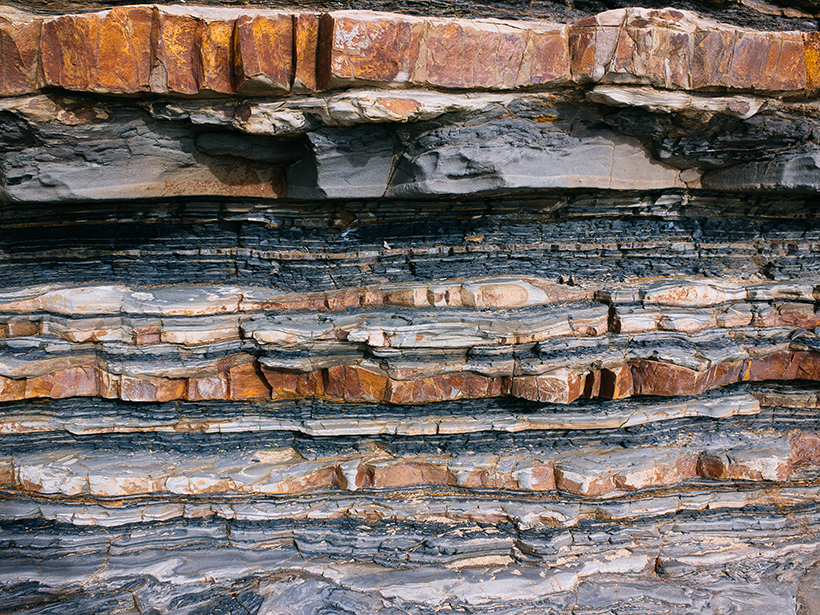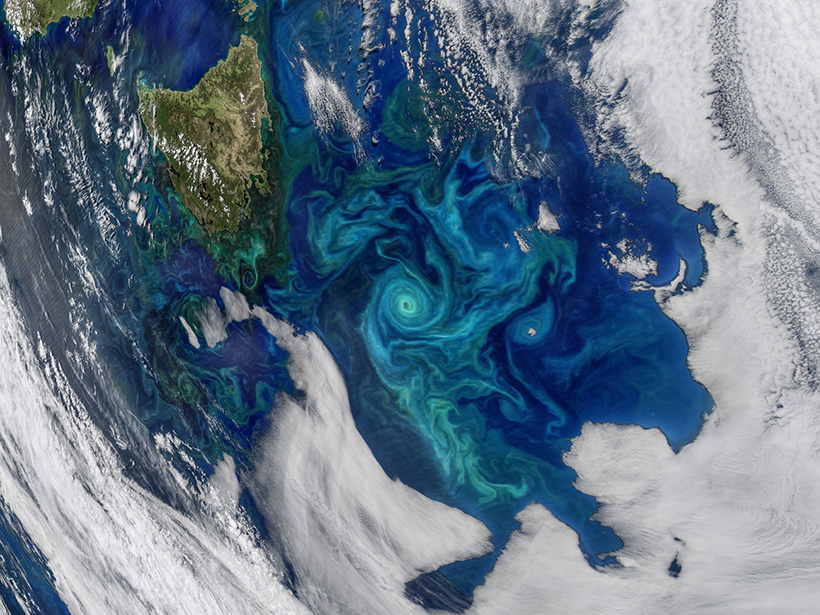A new special collection in JGR: Oceans presents results from studies of the Beaufort Gyre, an oceanic circulation system in the Arctic that has far-reaching influence on the global climate.
currents
North Atlantic Circulation Patterns Reveal Seas of Change
New evidence suggests the eastern Atlantic may be the site of major overturning.
Wrinkles and Bumps in the Gulf Stream
Observations of tiny vortices in the ocean interior provide hints of a dynamic richness of the deep ocean that we are yet to fully appreciate.
Route for Upwelled Kuroshio Waters into East China Sea Shelf
A simple algorithm obtains short-term variations in upwelling, which show that the subsurface Kuroshio waters can upwell directly into the East China Sea shelf under the advection of the Kuroshio.
Eddies Influence Productivity in the Subtropical Open Ocean
Ocean eddies may help recycle nutrients within giant current systems that encircle “desert” surface waters.
The Ocean’s Gateway to Antarctica
Advances in observations and modeling are providing new insights into the dynamic Antarctic Slope Current and its critical role in Earth’s climate.
Atlantic Overturning Circulation Questions Abound
International AMOC Science Meeting; Miami, Florida, 24–27 July 2018
How Ningaloo Niño Supercharges the El Niño–Southern Oscillation
The warm current cools the tropical Pacific and strengthens trade winds.
How Do Turbidity Currents Accelerate?
Flume experiments show that a self-reinforcing cycle can strengthen the currents responsible for transporting large amounts of sediment to the deep oceans.
Interpreting Mosaics of Ocean Biogeochemistry
Advances in technology and modeling capabilities are driving a surge in progress in our understanding of how ocean ecosystems mix and mingle on medium to small scales.

